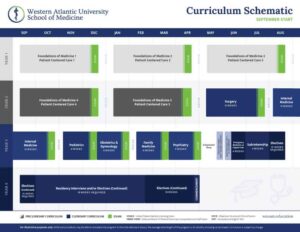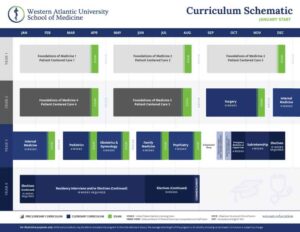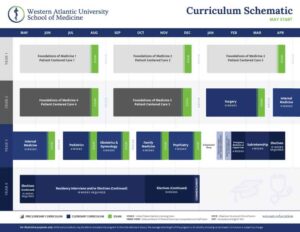Western Atlantic University School of Medicine’s (WAUSM) Preclerkship Curriculum is designed to build a solid foundation in the basic sciences and position students for success throughout their medical education careers. With a powerful focus on active, self-directed learning; robust simulation; and early exposure to clinical patients, WAUSM students can expect an integrated learning experience with individualized support that will prepare them to excel in the Clerkship portion of their studies, and beyond.
Learn why there is no substitute for in-person, supportive learning from our campus dean, Dr. Laura Welke.
A Constructivist Approach
The WAUSM education model allows you to connect new knowledge to pre-existing knowledge, creating an integrated tapestry of epidemiological understanding that you will begin building from day one.
Semester Snapshot
WAUSM students experience active, hands-on learning from day one. Here’s a snapshot of what you can expect in semesters 1 to 5 of our Preclerkship Curriculum:
Semester 1: As you make the transition from layperson to medical student, you will be introduced to the language of medicine, have your first encounter with a patient, begin your immersion into virtual anatomy, start working in teams with your fellow students, and establish a relationship with your academic mentor.
Semesters 2, 3, & 4: As you become immersed in all aspects of each system module, your integrated medical knowledge will continue to grow. Active, self-directed learning initiatives with cases will provide the framework for foundational science content, and you will begin to incorporate connecting elements and utilize the functions of basic science knowledge in patient care.
Semester 5: With the completion of the systems sequence, you will now be ready to do a complete history and physical. As a community, we will celebrate how far you have come as you prepare to leave Freeport for clerkships in the US and sit for the United States Medical Licensing Examination (USMLE) Step 1.
Simulation Labs
Work in our simulation labs begins early in the preclerkship stage of our curriculum, allowing you to participate in a wide range of hands-on activities, including working with standardized patients and high-fidelity patient simulators, and virtual reality scenarios that could potentially encompass the entire patient journey – from admission to discharge.
Lifelike models, patient simulators are equipped with technologies that make them resemble and respond like a living person, allowing you to acquire and hone technical skills such as suturing, resuscitation, endotracheal intubation, basic life support, and IV placement in a safe, simulated environment.
Team-training exercises are incorporated throughout, allowing you and your classmates to learn to work with each other, and other members of the healthcare team.
Virtual Anatomy
A time-honored introduction into the study of the human body, anatomy is an essential experience for all Western Atlantic University School of Medicine first-year medical students.
In step with US medical schools offering a more optimal way to study anatomy – and in keeping with our case-based, integrated approach to medical education – WAUSM students learn anatomy within the context of diseases and clinical practice in our Virtual Anatomy.
Using sophisticated teaching aids that provide a more precise view of live organs, virtual anatomy offers a reimagined and more appropriate representation of human anatomy that allows students to form a more accurate understanding of the body’s structures.
Virtual anatomy will allow you to:
- Probe the human body using three-dimensional renderings in virtual reality
- Examine organs from all angles
- View entire systems to gain a deeper understanding of the relationships between structures
- Connect structure and function together in an integrated fashion
- Learn how to link anatomical structures to clinical problems
- Acquire valuable exposure to broader trends in clinical practice
Watch the video to see Complete Anatomy in action, which will allow you to investigate the minute detail of the human anatomy in incredible 3D:
Learn how you will begin learning the clinical skills you will use throughout your MD career from Day 1 at WAUSM from our campus dean, Dr. Laura Welke.
QUICK LINKS

READY TO
LEARN MORE ABOUT WAUSM?
Active Learning at WAUSM
Patient care does not exist in a vacuum. As a practicing MD, you will operate within a team of healthcare professionals who are all working together to provide the best outcomes. Our active learning approach provides an enriching and rewarding learning environment that motivates students to build on their knowledge and apply what they have learned, thus preparing them to successfully navigate the complex healthcare systems in which they will work.
What is active, self-directed learning?
Our active learning model involves both individual and group responsibility and is something our leadership and faculty are devoted to.
How does it work?
We looked at the MD Program content and thoughtfully developed the best way to teach the materials. So rather than having a lecture-based curriculum that is passive on the part of the learner, we focus on active learning activities that include everything from flipped classrooms and didactic games, to guided learning in teams. All of this serves to create a highly integrated study program across disciplines.
What's the end result?
The formation of a community of master adaptive learners who excel in critical thinking; understand content in a robust, contextual manner; and who can assimilate new information quickly and effectively.




